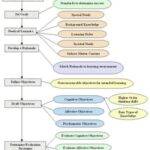Management accounting uses both financial and non-financial information and is generally intended for the use of internal users, such as managers and executives, who use the information to make decisions that help achieve the goals and objectives of the organization. The only limitations placed on managerial accounting are those imposed by the value-added principle, which states that the only actions that should be taken are those that add value to the product or service. Managerial accounting typically focuses on current and future time frames.
Examples of financial information used by management accountants include sales growth, profits, return on sales, and market share. Examples of non-financial information used by management accountants include customer satisfaction levels, product quality, performance of competing products, and customer loyalty.
Management accountants use financial and non-financial information together to aid in business decision-making. For example, a management accountant could note that sales growth has fallen at a rate comparable to a reduction in customer satisfaction. Further investigation could reveal that during the same time period, cheaper product materials were purchased which caused a reduction in product quality. Using this information, the management accountant might determine that reduced product quality caused a decrease in customer satisfaction which, in turn, caused sales to fall. This may lead to the decision to purchase higher quality materials at a higher price.
Management accounting is more than just working with numbers and evaluating past financial performance. Management accountants evaluate both financial and non-financial information in an effort to improve the overall current and future performance of an organization. The information provided by management accountants helps management within an organization make decisions including, but not limited to, which products to offer, how to improve processes, whether to purchase new equipment or software, and how to improve customer relations.
Accounting Data Used
Accounting data that must be examined includes direct material costs, direct labor costs, and manufacturing overhead costs. Direct material costs are the costs of raw materials that can be directly associated with the finished product. Direct labor costs include the wages paid to employees who can be directly associated with converting the raw materials to finished product. Overhead costs are costs that can not be directly traced to specific products and therefore must be allocated in some manner to the different products. Examples of overhead costs include indirect materials, indirect labor, building depreciation, equipment depreciation, insurance, taxes, building maintenance, and equipment maintenance.
Performance Measurement
Performance measurement involves the creation of goals and objectives, and the budgets for meeting those goals and objectives. The budgets must be realistic and include all items required to meet the specific goals or objectives, such as wages, equipment, and supplies. Specific goals and objectives must not conflict with the general goals and objectives of the organization. For example, departmental goals must be in accordance with overall organizational goals and objectives.
Management accountants can help company management improve the efficiency and effectiveness of each manufacturing sub process, both individually and as a whole. As an example, sub processes under consideration will include design, material acquisition, assembly, and testing.
Product Design
To improve the efficiency and effectiveness of design, the company must determine the desired mix of quality and cost, and then construct steps to reach that desired mix. This involves several steps. First, management must first determine customer requirements. Once this has been done, management can ascertain staffing needs in order to estimate the costs associated with employing the experienced staff needed to design the products. Then these costs can be compared with the costs associated with outsourcing the design of products. Management must also consider the quality of product design, and compare the quality of in-house product design versus outsourced product design.
Material Acquisition
Improving the efficiency and effectiveness of material acquisition involves first determining material requirements based on customer finished product needs. Once requirements have been determined, material suppliers must be identified. The next step is to compare the quality and costs of materials available through the different suppliers. Other factors that must be researched include material availability and delivery time. Suppliers must have materials available when needed, and must be able to deliver the material in a timely manner so the materials are received when needed.
Product Assembly
Improving the efficiency and effectiveness of product assembly involves several steps. Management must determine the most cost efficient and time efficient way to assemble products. This includes designing a way to assemble the products using the least number of steps. This may require the creation of formal procedures outlining the assembly process. This may also require the purchase of new equipment or adjustments to staffing levels. Management will need to compare the costs and benefits associated with these things in order to determine what would work best. Redesigning the workspace may also improve product assembly. Management may wish to implement cellular manufacturing, which is the close arrangement of equipment and people that produce associated products. This “allows a continuous and smooth movement of…materials to produce products from start to finish in a single process flow” (Cellular Manufacturing).
Efficient and effective product testing also requires formal procedures. Creating these procedures requires an understanding of the desired finished product based on customer demand. Once the necessary product characteristics are identified, efficient and effective testing procedures can be created. In addition, educated and well trained staff must be employed to perform the product testing. A cost benefit analysis will help management determine whether to outsource product testing or perform it in-house.
Ethics
It is also important to note that ethics plays a major role in management accounting. In an effort to promote the highest ethical practices, and as a model for compliance with section 404 of the Sarbanes-Oxley Act of 2002, the Institute of Management Accountants (IMA) issued IMA’s Statement of Ethical Professional Practice. These standards discuss competence, confidentiality, integrity, and objectivity. In addition to these standards, each organization must establish and communicate written policies regarding ethical behavior based upon the specific organizational values. These written policies should include organizational expectations as well as the ethical expectations outlined by the IMA, and design specific steps to follow, including penalties, when ethical issues arise.
References
“Cellular manufacturing (CM).” SiliconFarEast website. URL: http://www.semiconfareast.com/cellular-manufacturing.htm





